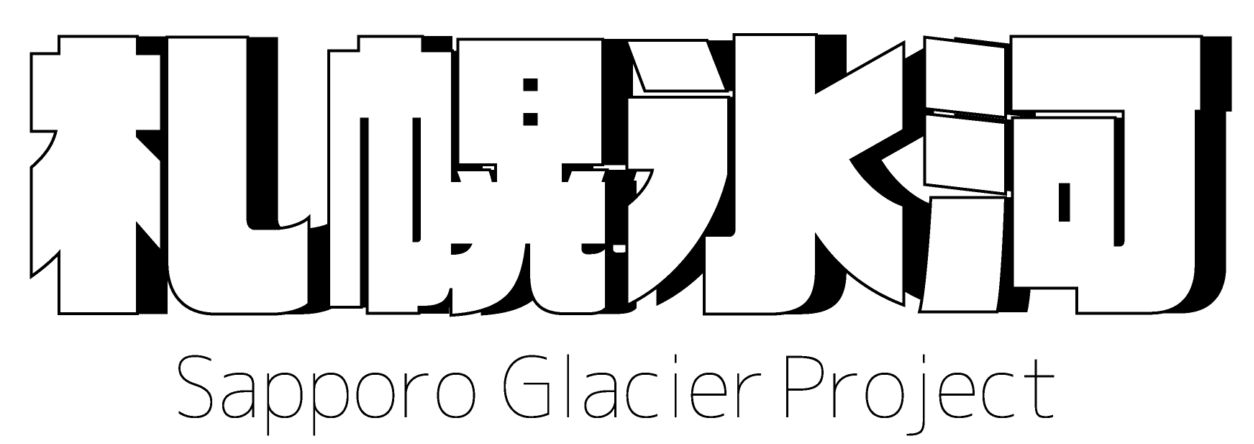What is the Sapporo Glacier?

Let’s Make a Glacier from Snow Waste!
The Sapporo Glacier Project is an initiative that seeks to transform urban “snow waste” into a new resource by gathering it in the coastal zone and cultivating it into an artificial “glacier.”
In Hokkaido, a vast amount of money is spent every year on snow removal and disposal.
If this snow could be reused not as waste, but as a cryogenic resource and a tourism asset, it would create substantial environmental and economic value.
By forming a glacier, we can expect multiple effects:
- Slowing the rise of seawater temperature and contributing to the mitigation of global warming
- Revitalizing the port area as a new hub of tourism and culture
- Reducing snow removal costs
This project also serves as an experimental platform where scientists, engineers, artists, and citizens collaborate to redesign the relationship between city and nature.
Just as ice slowly grows over time, this endeavor aims to gradually shift the consciousness of society.
That is the future envisioned by the Sapporo Glacier Project.
Key Facts
| Estimated Annual Snowfall (City of Sapporo) | Target Scale of the Perennial Ice Body | Melt-ControlMaterials (Examples) | Primary Purpose |
| Approximately 20 million m³ | ~1㎢ | Bark chips | Fundamental Science |
| Partial Conversion for Research Use | Phase Expansion: Pilot → Observation → Implementation | Cost-Efficient and Diffusion-Suppressive | Glacier Dynamics, Energy Balance, and Urban Climate |
How it works
1
Collection and Deposition
Consolidate collected urban snow at the designated site and engineer stratified deposition.
2
Insulation and Snowmelt Control
Apply organic mulch materials on the surface to optimize the energy balance.
3
Observation and Modeling
Integrate data from the degree-day method, radiation balance, and heat flux analysis.
4
Social Implementation
Scale up the system and integrate it with urban functions based on the results.
Masahiko Todoriki (Ph.D)/等々力 政彦
Profile
For more than three decades, Masahiko Todoriki has carried out field research in southern Siberia on the traditional songs and instruments of the Tuvan people, including throat singing (khöömei), exploring the interdependence of language, culture, and life through both scholarship and artistic expression.
Trained also in the natural sciences, he earned his Ph.D. at Osaka University with a study on an experimental symbiotic system of Escherichia coli and Dictyostelium discoideum, developing cross-disciplinary research that bridges symbiotic evolution, ethnohistory, and linguistics.
At the heart of his work lies a deep fascination with the process by which difference encounters difference to generate new order.
The Sapporo Glacier Project embodies this same philosophy—conceived as an experiment in “symbiotic evolution” between environment and society, it seeks to unite discarded urban snow, natural energy, and human creativity.
Among his major works are The Wind Across Siberia, Tuvan Music Terminology, The Encyclopedia of Central Eurasian Culture (co-author), and Shogakukan NEO: Music (supervisory contribution).
His peer-reviewed publications include co-authored papers in BioSystems and Journal of Biological Physics, while his musical collaborations feature on Nodoomi: Steppean Diorama (Tarbagan), Ziopangu Boy 2000 (Morio Agata), Upopo Sanke (Umeko Ando & OKI), and Watashi no Sukina Warabeuta 2 (Saho Terao).
Todoriki’s work spans a remarkable spectrum—from Tuvan traditional music and experimental biology to Eurasian history and toponymy—earning him international recognition across both the humanities and the sciences.
For a complete list of Masahiko Todoriki’s publications and works, please see here.
Contact
Joint research, demonstration field offerings, donations, and publicity cooperation are all warmly welcomed.
Please feel free to contact us first.

Todoriki Laboratory/等々力 政彦 研究室
About the Todoriki Laboratory
An initiative that develops projects based on insights gained from reflections on the creative capacity of life.
Founding Spirit
“Life possesses the ability to reinterpret and creatively incorporate the ever-changing external environment. By observing the encounters, relationships, and transformations among living beings, we seek to deepen our understanding of life’s inherent creativity.”


